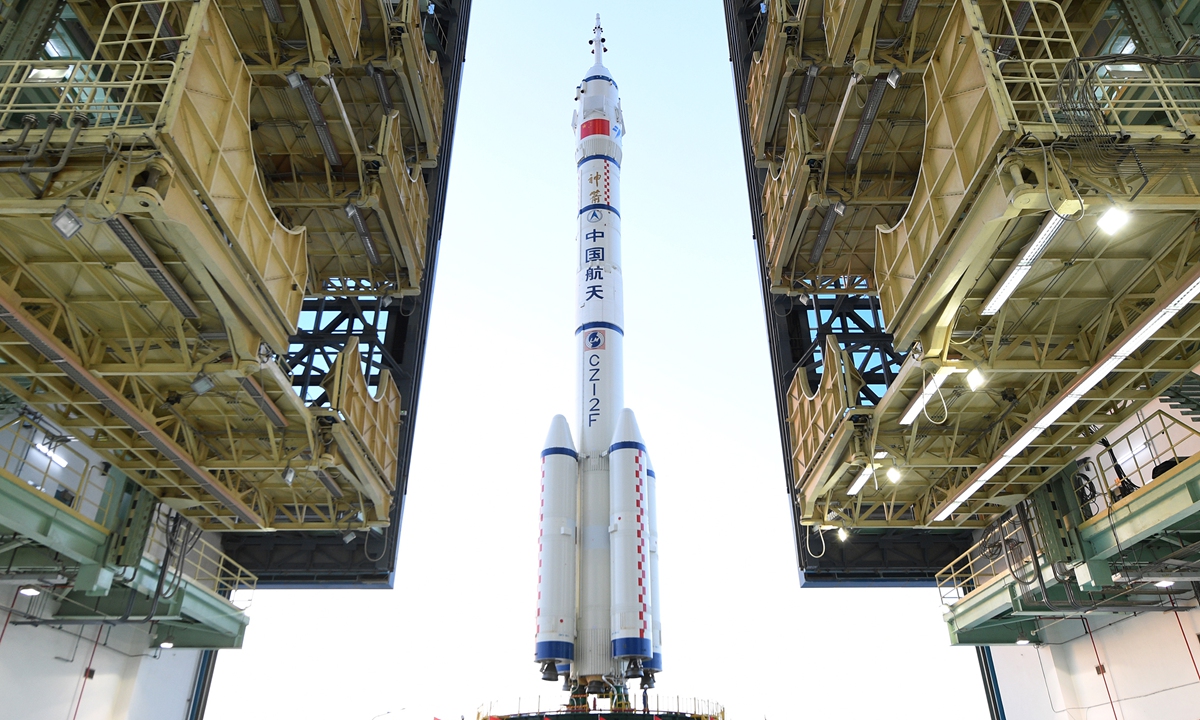
The combination of Shenzhou-13 manned spacecraft and Long March-2F Y13 carrier rocket rolled out to launch pad in Jiuquan Satellite Launch Center in Northwest China's Gansu Province on Oct 7, 2021. The upcoming mission is expected to send three taikonauts to China’s Tianhe space station core module for record-long six-month stay in orbit. Photo: Wang Jiangbo
China's Tianhe space station core module will soon receive its second batch of taikonauts, the Shenzhou-13 crew led by mission commander Zhai Zhigang, and host their six-month stay in orbit - a new record for the longest duration of any single manned flight mission in the country's history, as the manned spacecraft mounted on the Long March 2F rocket is expected to take off early Saturday morning from Jiuquan Satellite Launch Center in Northwest China's Gansu Province.
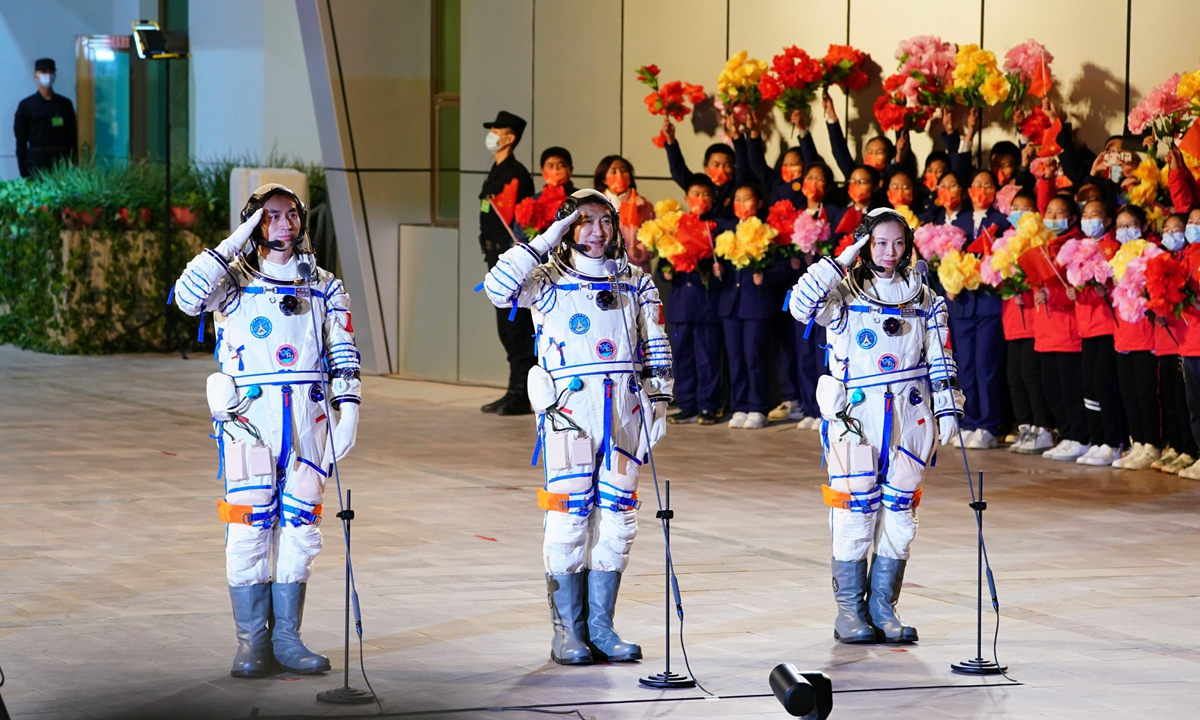
Photo:Deng Xiaoci/GT
Zhai Zhigang, Wang Yaping, and Ye Guangfu have been selected to ride the Shenzhou-13 craft to space and are expected to live and work in China's space station for a record-long six months.
The average age of the Shenzhou-13 crew is 45.6 years old, a significant seven years younger than the Shenzhou-12 crew. All three taikonauts are members of the Communist Party of China.
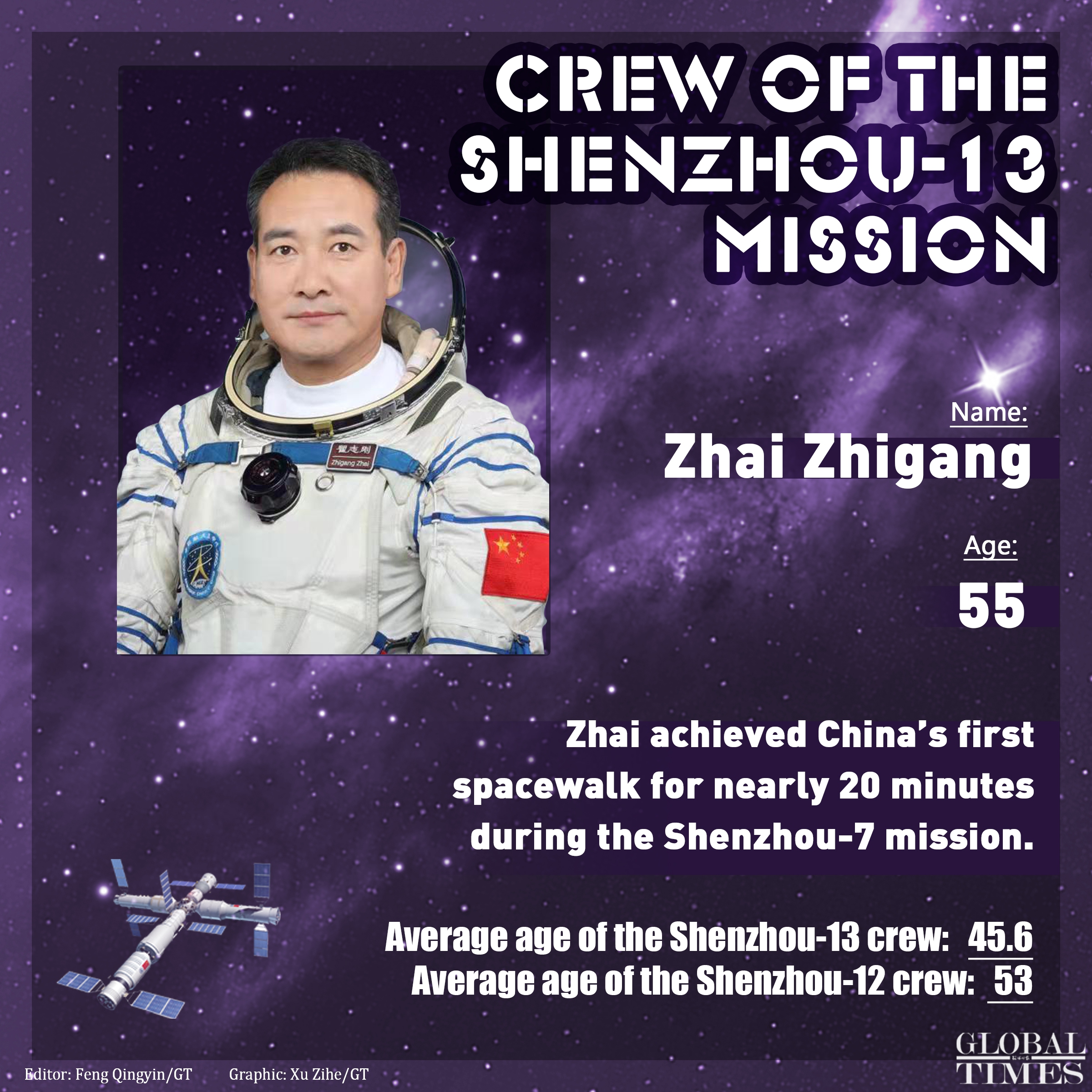
Crew of the Shenzhou-13 mission - Zhai Zhigang Editor:Feng Qingyin/GT Graphic:Xu Zihe/GT
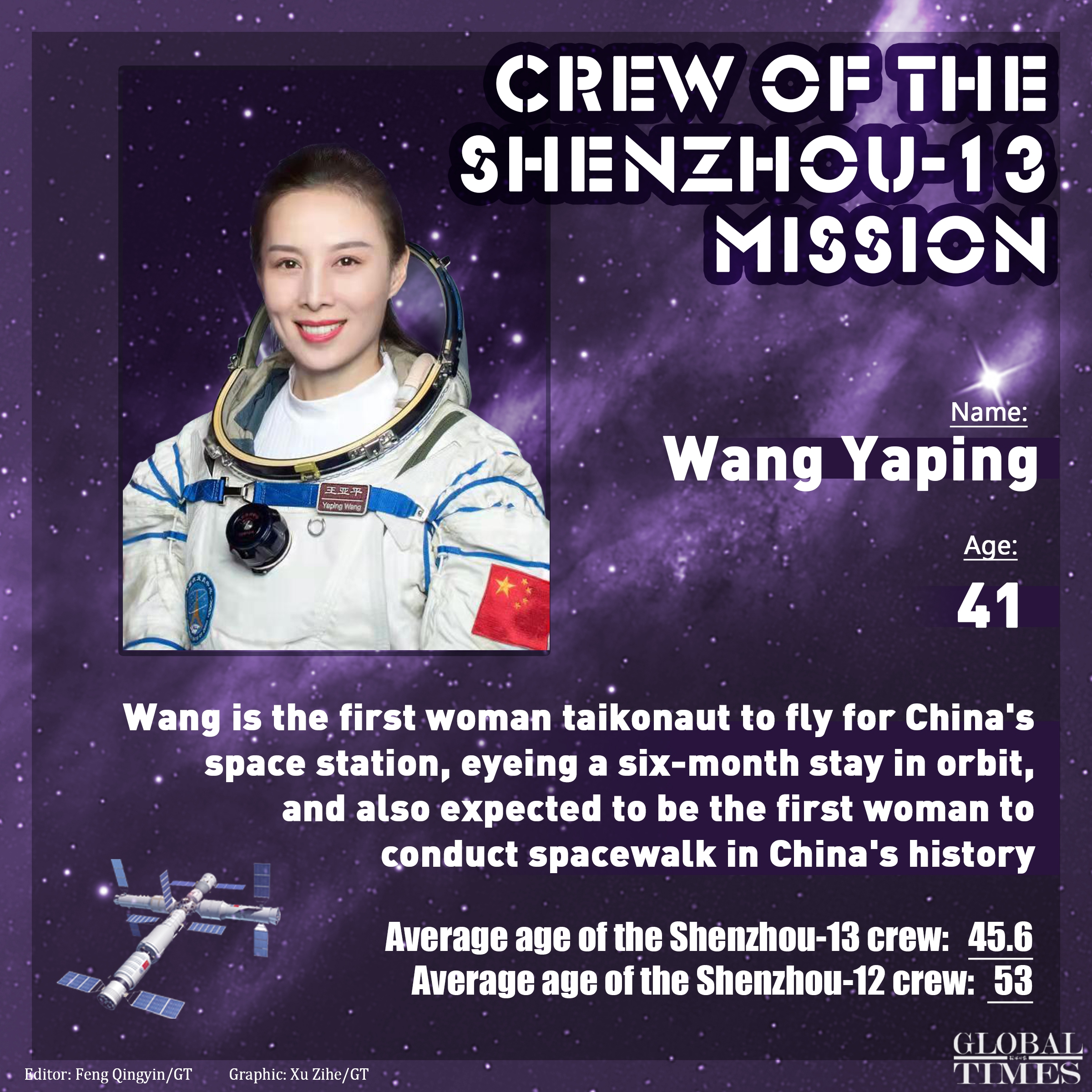
Crew of the Shenzhou-13 mission - Wang Yaping Editor:Feng Qingyin/GT Graphic:Xu Zihe/GT
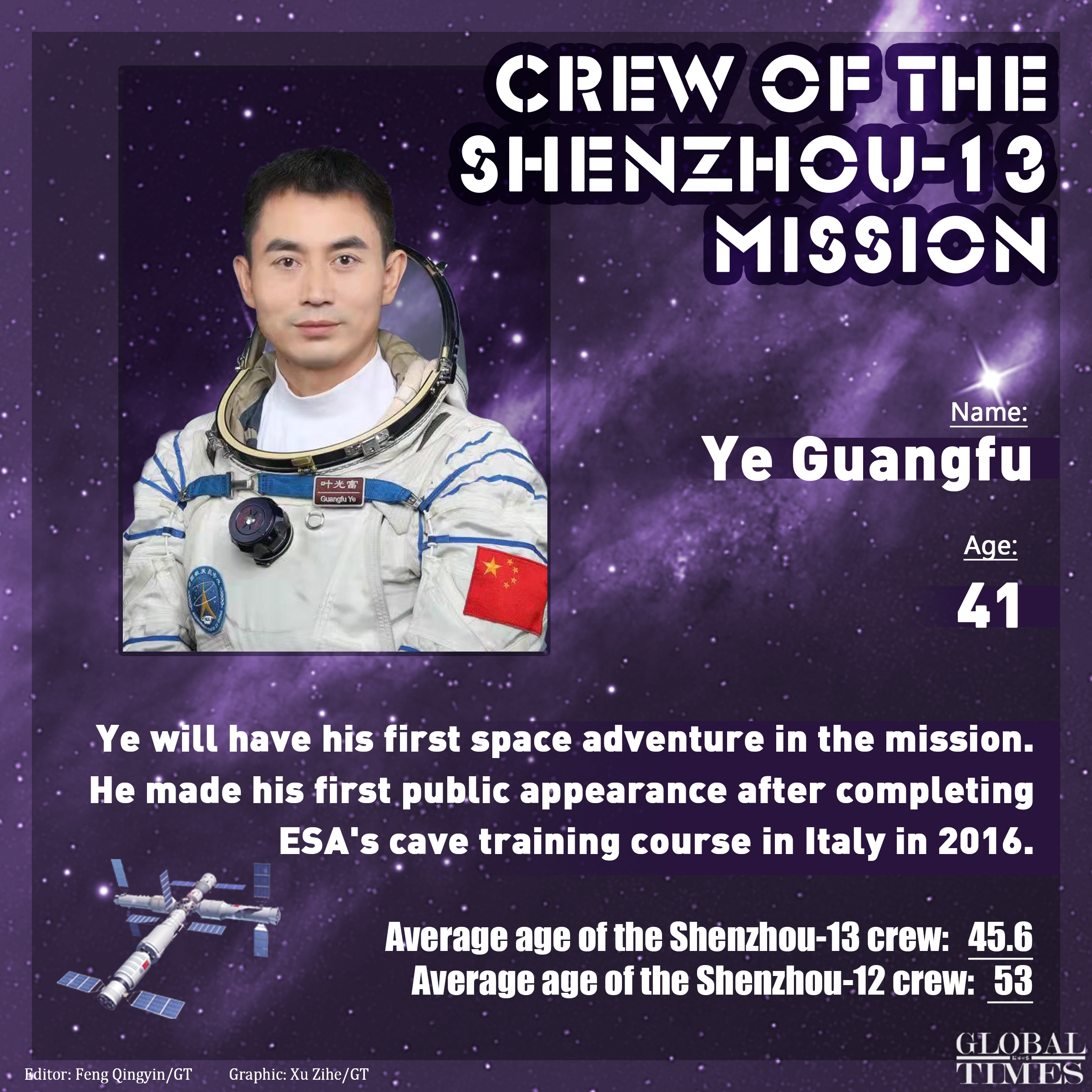
Crew of the Shenzhou-13 mission - Ye Guangfu Editor:Feng Qingyin/GT Graphic:Xu Zihe/GT
Wang Yaping will fly the mission as the first female astronaut to enter China's space station. Trending on the search list of China's microblogging platform Sina Weibo, Wang has become an inspiration to millions of women as they gaze upon the stars with an indescribable pride for the growing strength of women.
The date of the Shenzhou-13's launch falls on the same day as China detonated its atomic bomb in 1964 exactly 57 years ago. Also, on the same date as launching Shenzhou-12, China's first hydrogen bomb was detonated in 1967. "This is the Chinese-style of romance, commemorating our past glories," netizens said.
Wei Dongxu, a space observer and TV commentator who also came to the launch event, told the Global Times that the ability for continuous launches have shown the maturity of Chinese technologies in manned space programs.
Shenzhou-13 was rolled out to the launch pad together with Shenzhou-12 and served as an emergency backup craft to fly into space in case problems occur to taikonauts in the space station. "This time, Shenzhou-14 will also serve as a backup plan to safeguard the Shenzhou-13 crew, showing that China puts taikonauts' safety on top of all else," Song said.
Chang Wuquan, chief designer of the Long March-2F rocket system, told the Global Times that two launches every year [for the Long March-2F] would be a new routine in years to come.
The Shenzhou-13 manned spaceflight mission is the second of its kind in the Chinese space station's building period, following the epic three-month-long Shenzhou-12 mission, which concluded in September.
The Saturday launch marks the last one scheduled for this year toward building China's space outpost, and Shenzhou-13 is expected to draw a conclusion to the technology verification period of China's space station building period before it enters a more complicated actual construction phase to form a three-module complex around 2022.
The six-month stay of the Shenzhou-13 crew will become the new normal for future China Space Station manned missions. It also suggests that the Shenzhou-13 crew will celebrate a special, unforgettable Spring Festival in space.
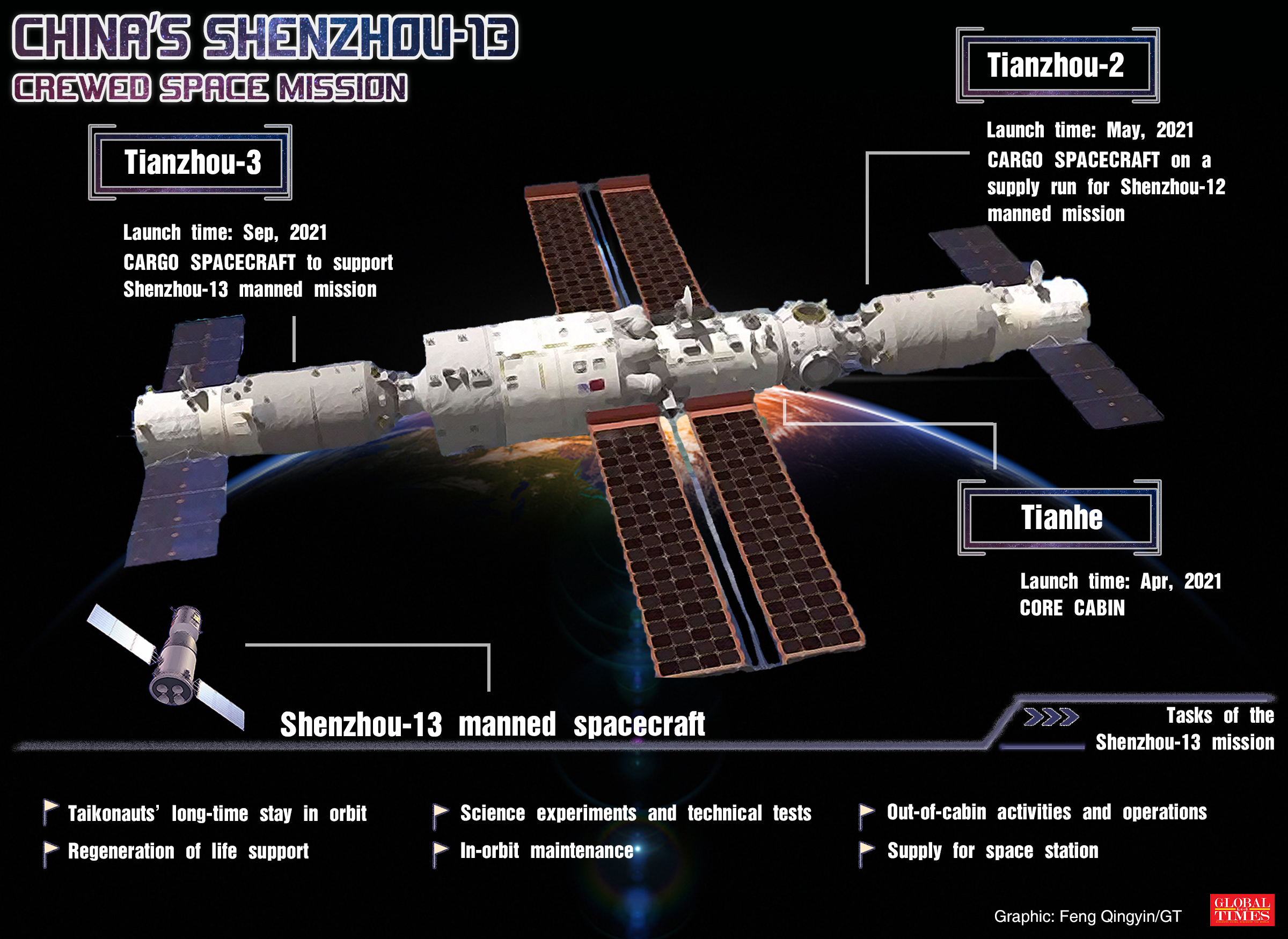
China’s Shenzhou-13 crewed space mission Graphic: Feng Qingyin/GT
Major tasks and challenges aheadThe CMSA has revealed that the spacecraft would meet its first challenge right after the launch, as it needs to execute an automatic docking and rendezvous with the Tianhe core module from the radial direction, instead of the orbiting craft's front and rear docking point as Shenzhou-12, Tianzhou-2 and -3 cargo spacecraft all did.
According to the spacecraft developers with the China Academy of Space Technology, they have designed a new rendezvous path and circling flight mode to support such fast-docking fashion, and the success of this method would be another display of China's spacecraft docking capabilities.
The Shenzhou-12 practiced such R-Bar docking technology shortly after its detachment from the core module in September, the Global Times previously reported.
The Global Times learned from mission insiders that the Shenzhou-13 mission will also attempt a fast automatic rendezvous and docking with the Tianhe core module, just as the Shenzhou-12 spacecraft did, which would take place about six and a half hours after the launch.
The Shenzhou-13 crew is expected to carry out two to three extravehicular activities, better known as spacewalks. According to the CMSA, they would be tasked with installing transfer gears linking the big and small robotic arms and related suspension gears, in order to make preparation for future construction works.
Their six-month stay itself would verify the performance of relevant technologies to sustain taikonauts' wellbeing and support their highly efficient work in orbit.
Science and technology experiments in the field of space medicine and microgravity physics, and conducting a variety of science popularization events are among other goals of their stay.
Huang Weifen, the Chinese astronaut training chief, revealed to the Global Times on Thursday that the mission,
which will be China's longest manned mission in space, poses some tough challenges for the crew, as the enclosed, confined room in the cabin, and vibration, noise, and gravity-free space environment will be intertwined, adding complexity to their normal work and life.
Their physical and mental health will face far more challenges than during the previous mission, and the weightless impact on their musculoskeletal and cardiovascular systems will be more prominent, Huang noted.
It may lead to sleep disorders, fatigue, gastrointestinal disorders and cardiovascular dysfunction among other problems, and the crew will also be prone to irritability and other adverse psychological reactions, she added.
Pang Zhihao, a Beijing-based space expert and retired researcher from the China Academy of Space Technology, told the Global Times that in light of such challenges, psychological compatibility was an important factor considered in the selection of the crew.
"Taikonauts can also use psychological relief methods such as listening to music, watching TV, or communicating with ground-based psychologists and their families to adjust and improve their mental states," Pang noted.
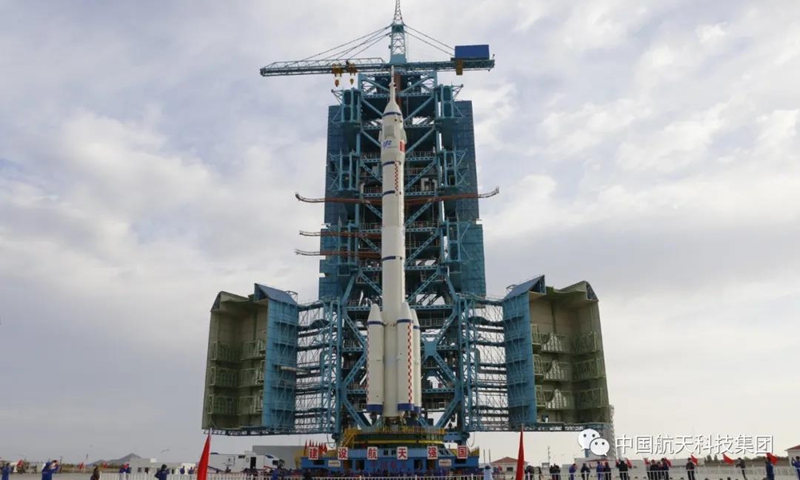
Combo of Shenzhou 13 manned spacecraft and Long March 2F Y13 rolls out to launch pad Photo: CASC
Welcoming all "China welcomes astronauts from other countries to come onboard China's Space Station and conduct flight cooperation. We believe we could see more such cooperation after the space station becomes fully operational and utilized," CMSA spokesperson Lin Xiqiang said ahead of the launch.
Manned space exploration is a common task for all mankind, requiring full cooperation. China's space station is an integral part of building a community of shared future, Lin added.
According to Lin, the CMSA has signed cooperation treaties with space agencies from countries including Russia, Germany, France, Italy and Pakistan, as well as with international organizations including the ESA and UNOOSA, and conducted a variety of exchanges and corporations.
In the field of astronaut selection and training, the taikonauts participated in training in Russia and Shenzhou-13 crew member Ye took part in a cave training in Italy, where six astronauts from China, the US, Russia, Spain and Japan all trained together.
After the Shenzhou-13 mission completes a comprehensive evaluation of each operational system, the space station project will enter the construction phase, which is expected to last until 2022.
A total of six launches are scheduled during this phase. First, the Tianzhou-4 supply mission and Shenzhou-14 manned mission will be launched. During the Shenzhou-14 crew's stay, the Wentian and Mengtian experiment modules will be delivered to the station, completing the three-module combination by the end of 2022.
The Tianzhou-5 cargo craft and Shenzhou-15 manned mission will then arrive subsequently at the station to give an overall assessment of its working conditions, after which China's space station will enter the operational phase. Later, the Xuntian optical telescope will be launched to conduct independent flights on the same orbit with the space station.










